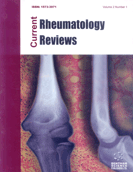Abstract
Background: According to the World Health Organization, osteoarthritis (OA) is one of the 10 most disabling diseases in developed countries, with worldwide estimates of 9.6% prevalence in men and 18.0% in women over 60 years old. Its management is not well established and involves the use of high doses of painkillers coupled with anti-inflammatory agents.
Objective: In the search for alternatives to manage the disease, previous studies have shown superior properties of Q-ActinTM in managing OA-related pain compared with standard treatments. Qactin is a cucumber extract with the anti-inflammatory iminosugar idoBR1 standardised to over 1%. This study investigated the effects of different doses (20 mg, 100 mg) of Q-Actin in a longitudinal placebo-controlled experiment.
Methods: There were 101 patients with knee OA enrolled for the 180-day study, with 91 patients completing it. Patients were grouped into a placebo group (PLBO), as well as a 20mg dose (Q-Actin 1) and 100 mg dose (Q-Actin 2) groups. The PLBO group received cellulose in capsules identical to the Q-Actin capsules.
Results: There was a significant improvement in the pain-related parameters over time that was dose-dependent.
Conclusion: This study clearly demonstrated the effectiveness of Q-Actin compared to placebo in the management of pain related to moderate osteoarthritis.
Keywords: Q-ActinTM, cucumber, osteoarthritis, Cucumis sativus, iminosugar, idoBR1.
[http://dx.doi.org/10.1016/j.cger.2010.03.001] [PMID: 20699159]
[http://dx.doi.org/10.1016/j.berh.2014.01.004] [PMID: 24792942]
[http://dx.doi.org/10.1016/j.joca.2015.07.026] [PMID: 26707991]
[PMID: 3068365]
[http://dx.doi.org/10.1186/s12889-016-2782-x] [PMID: 26830813]
[http://dx.doi.org/10.1017/S0033291700009934] [PMID: 3078045]
[PMID: 9101517]
[http://dx.doi.org/10.1186/1475-2891-8-38] [PMID: 19682376]
[http://dx.doi.org/10.4103/0975-7406.106561] [PMID: 23559821]
[http://dx.doi.org/10.17576/jsm-2019-4808-13]
[http://dx.doi.org/10.2147/CIA.S173227] [PMID: 30498336]
[http://dx.doi.org/10.11648/j.ajhr.s.2014020501.18]
[http://dx.doi.org/10.1001/archinte.162.18.2113] [PMID: 12374520]
[http://dx.doi.org/10.3389/fendo.2019.00431] [PMID: 31312184]
[http://dx.doi.org/10.2174/1573397117666211116111738] [PMID: 34784876]
[PMID: 28825779]
[http://dx.doi.org/10.1136/ard.2009.120469] [PMID: 20525840]
[http://dx.doi.org/10.1016/j.toxrep.2018.10.014] [PMID: 30425929]
[http://dx.doi.org/10.1021/acsomega.0c02092] [PMID: 32656449]
[http://dx.doi.org/10.3390/molecules27103342] [PMID: 35630818]
[http://dx.doi.org/10.3109/s10165-012-0818-3] [PMID: 23283480]
[http://dx.doi.org/10.1016/j.biocel.2013.08.018] [PMID: 24004831]
[http://dx.doi.org/10.1177/1759720X19864492] [PMID: 31384314]











